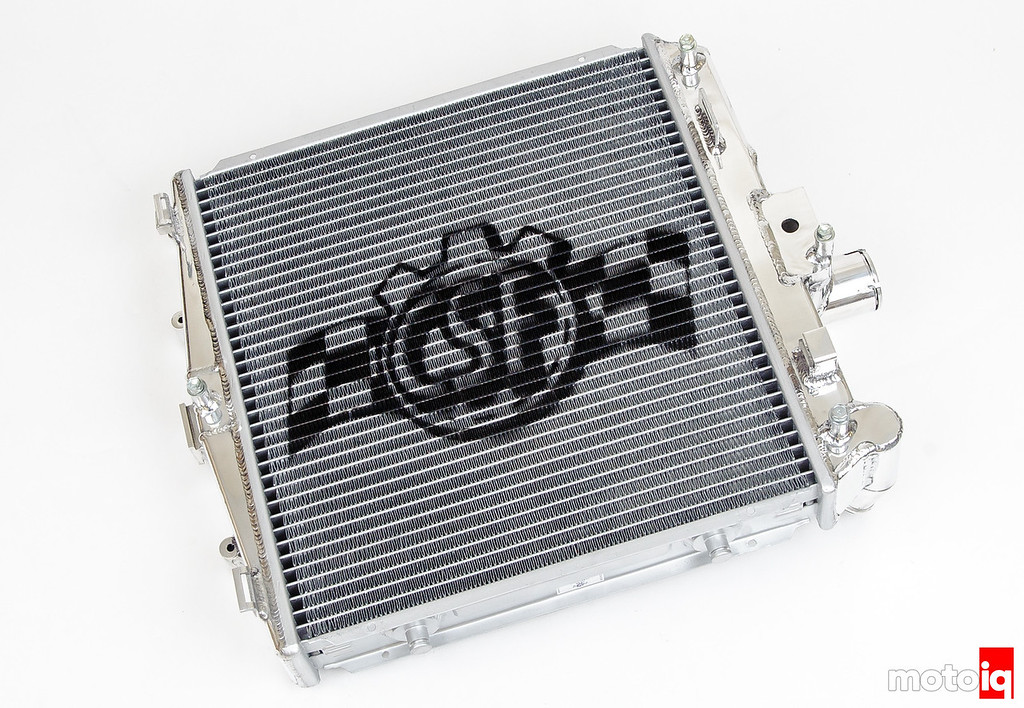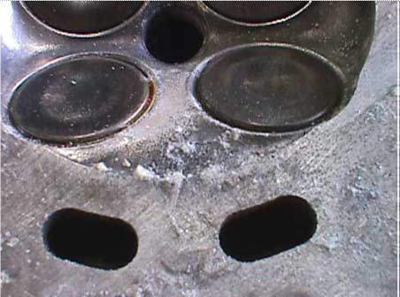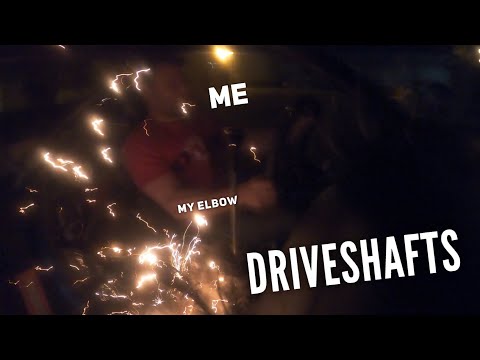
The 987 Porsche is known to have heating problems when driven on the track hard, especially ones that have the PDK transmission. PDK equipped cars can go into limp mode during a track session longer than 15 minutes on a hot day. Since we don’t want to be compromising the aerodynamics of our Verus Engineering aero system by cutting holes in the front of the car for extra heat exchangers for the PDK fluid and engine oil, we will be using oil to water coolers for the PDK and engine oil. This means that we will have to increase our cooling systems ability to absorb more heat from the engine and transmission. We are turning to CSF Radiators for a set of there big racing radiators for the nose of our 987.

Porsche has a complicated cooling system, we think its to fit in the cars low nose. There are two small radiators in the corners of the nose. Some models of 987 have an optional center radiator. The Cayman S with a PDK has a center radiator on the .2 models. We were originally going to do a 987.1 model with the M96 engine to show what could be done to make the car track driveable. One of the mods was going to add a center radiator to the car. If your 987 doesnt have a center radiator you can use this kit from Rennline. It has the OEM Porsche brackets and grill to fit the OEM center radiator.

It also uses the OEM center radiator and hoses to make adding the center radiator an easy bolt in affair. Even though we wouldn’t be using the OEM center radiator in the kit, the kit is still cheaper than buying the parts one by one from the Porsche dealer!

We are going to be using a CSF racing center radiator. The CSF center radiator has a thicker more efficient core. It also has tig welded aluminum end tanks which is a much stronger construction than the OEM crimped on plastic tanks that are prone to leak. The CSF radiator also has all of the OEM bosses to bolt straight on with no fuss and the OEM hoses clip directly on as well.

The internal construction of the CSF radiators core has some innovative features. One of these is the B-Fin tube. On a conventional radiator, there are rows of oval-shaped tubes. Factory radiators usually have two rows and aftermarket radiators have as many as 4. This gives more cooling area but the air has a problem penetrating the core and doing heat exchange. The CSF core has one big tube in a single row. CSF calls this their B tube. The B Tube starts off as a sheet of aluminum that is folded back onto itself to form a B shape to the desired width. After forming the seam of the tube is furnaced brazed to make it one piece and leak-free. The B-Tube gives the ideal ratio of fluid to air exposure with the center B piller giving strength and an additional conduction path for heat to follow from the fluid to the outside of the tube. The one-piece construction also makes it easy for air to penetrate the core, helping with heat exchange and cooling.



